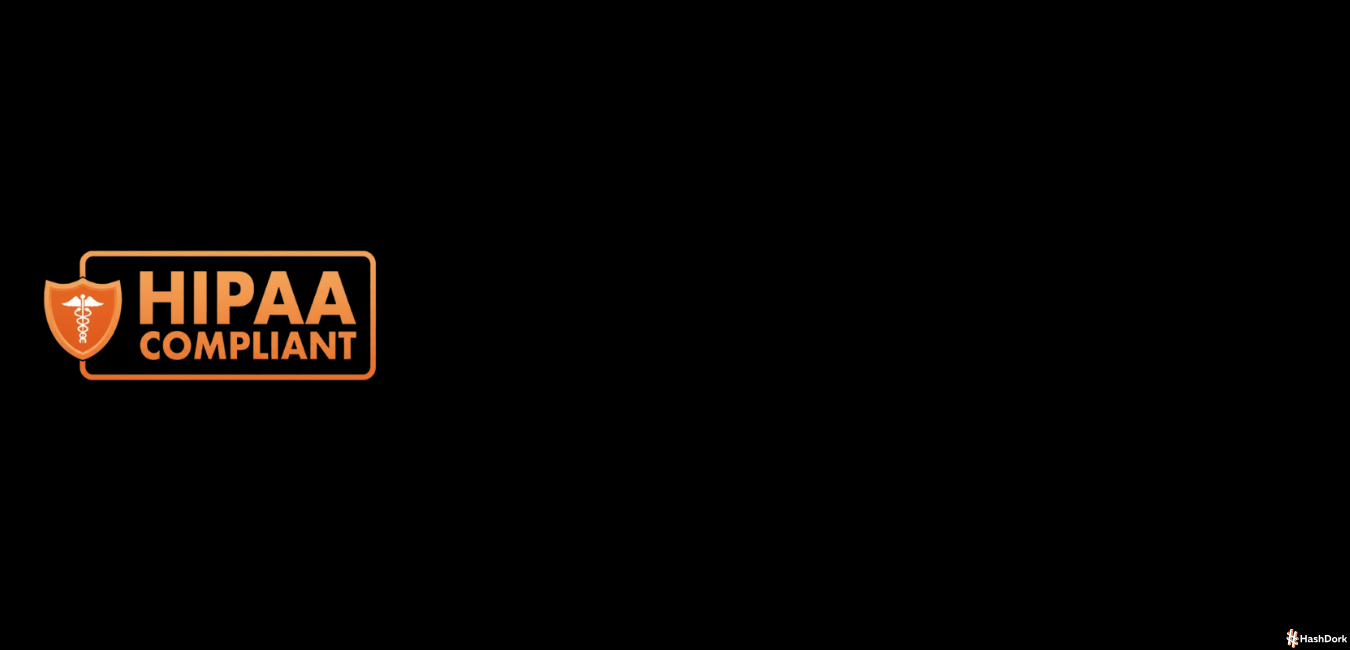Table of Contents[Hide][Show]
Unified Endpoint Management (UEM) provides a single platform to manage and secure all of an organization’s devices from one console.
This includes company-owned and personal endpoints like desktops, laptops, smartphones, tablets, and Internet of Things (IoT) devices.
UEM is the next step in device management, combining the features of older systems. It grew from Mobile Device Management (MDM), which focused on controlling mobile device functions, and Enterprise Mobility Management (EMM), which added management for mobile apps and content. UEM integrates these capabilities to create one solution for all endpoints.
Why is UEM Critical?
UEM has become essential for managing modern IT environments for several reasons:
- The increase in hybrid work models requires secure access for employees from any location.
- A growing variety of devices, including Bring Your Own Device (BYOD) and IoT, connect to company networks, creating new security challenges.
- Cybersecurity threats increasingly target endpoints, and UEM allows IT teams to enforce security policies and deploy updates from a central point.
- It helps provide a consistent and productive user experience by ensuring employees can work seamlessly across all their devices.
This article offers a technical deep-dive into the top 15 UEM solutions for 2025, analyzing their key features, technical advantages, and limitations to help IT decision-makers choose the right platform.
1. ManageEngine Endpoint Central
ManageEngine Endpoint Central is a UEM solution that provides centralized management for servers, desktops, laptops, smartphones, and tablets from a single console.
It is built to automate the entire endpoint management lifecycle, from initial device onboarding to retirement. The platform has a significant emphasis on security, featuring strong patch management and vulnerability assessment capabilities.

It offers support for Windows, Mac, and Linux operating systems, making it a versatile choice for diverse IT environments. The goal is to simplify IT administration by providing a single point of control for monitoring, managing, and securing all endpoints.
Key Features
- Automated Patch Management: The system automates the deployment of patches for operating systems and more than 1,000 third-party applications to fix vulnerabilities.
- Software Deployment: It uses a library of over 10,000 pre-defined templates to silently install and uninstall software on devices.
- Asset Management: This feature delivers real-time tracking of hardware and software inventory, manages software licenses, and tracks device warranty information.
- Endpoint Security: Endpoint Central includes tools for vulnerability scanning, browser security, application control, device control, and data loss prevention features such as BitLocker management.
- Remote Control & Troubleshooting: The platform offers remote desktop access that supports multi-user collaboration, records sessions for review, and includes various system management tools for troubleshooting.
- OS Imaging & Deployment: It enables hardware-independent operating system deployment for new machines using both online and offline imaging methods.
Pros
- Its extensive set of features covers the complete endpoint management and security lifecycle.
- The solution offers strong automation for tasks like patching and distributing software.
- It is a cost-effective option suitable for small to mid-sized businesses as well as large enterprises.
- The platform provides support for a wide variety of operating systems and third-party applications.
Cons
- The user interface can feel complicated for new users because of the large number of features available.
- Creating specific reports may require a degree of customization to meet unique business needs.
2. Microsoft Intune
Microsoft Intune is a cloud-based unified endpoint management (UEM) service that is a core component of the Microsoft 365 and Azure ecosystem.
It is designed to secure and manage user access while simplifying app and device management across various endpoints, including mobile devices and desktops. Intune helps organizations apply Zero Trust principles to verify device compliance and protect corporate data.

The service provides a single, unified place for IT teams to manage endpoints without needing on-premises infrastructure. Its integration with AI and analytics helps to automate routine tasks and provide insights to improve the user experience.
Key Features
- Co-management with SCCM: Allows IT teams to manage Windows 10 and Windows 11 devices concurrently with Microsoft Configuration Manager and Intune from a single console.
- Conditional Access Policies: Works with Microsoft Entra ID to enforce detailed access rules based on user, device compliance, location, and application risk.
- Autopilot: Simplifies the deployment and pre-configuration of new Windows devices, allowing them to be shipped directly to users in a business-ready state.
- Application Management (MAM): Secures corporate data at the application level, which allows employees to use personal devices for work without requiring full device enrollment.
Pros
- It offers deep integration with the Microsoft 365 and Azure security services.
- The platform provides powerful tools for managing Windows operating systems and Microsoft 365 applications.
- It includes strong identity-driven security through its conditional access features.
Cons
- The cost can be higher for organizations that are not already using the Microsoft ecosystem.
- Its management capabilities for non-Windows platforms like macOS and Linux are not as extensive as its Windows management features.
3. Workspace One UEM
Workspace ONE UEM is an intelligence-driven digital workspace platform that brings together access control, application management, and endpoint management for multiple platforms.
It is made to deliver a consistent employee experience while applying zero-trust security across all devices, whether they are company-owned or personal.

The platform gives IT teams a single console to manage the full lifecycle of any endpoint, including mobile, desktop, and even specialized devices like rugged handhelds and IoT hardware.
It uses automation and analytics to simplify IT tasks and proactively address issues that could affect user productivity.
Key Features
- Digital Employee Experience (DEX): This feature uses AI-driven insights to monitor and improve user experience, with automated actions to fix common problems.
- Freestyle Orchestrator: It provides a low-code workflow automation tool that helps IT create complex sequences for device provisioning and application delivery.
- Unified App Catalog: The platform offers a single-sign-on (SSO) experience, giving users one place to access all their web, native, and virtual applications.
- Rugged and IoT Device Management: Workspace ONE includes specialized support for purpose-built devices commonly used in industries like logistics, manufacturing, and retail.
Pros
- It provides an excellent user experience with strong self-service capabilities for employees.
- The platform has strong integration with VMware’s virtualization products, including virtual desktops (VDI) and secure access service edge (SASE).
- Its powerful automation and orchestration engine helps streamline routine IT management tasks.
Cons
- The initial setup of the platform can be difficult and may require specialized IT resources to configure correctly.
- Its pricing can be high, which may make it a costly option for small to mid-sized businesses.
4. Ivanti Neurons for UEM
Ivanti Neurons for UEM is an AI-driven platform that automates device and software management, from discovery to remediation.
It provides a unified console to see, manage, and secure all endpoints, including mobile, desktop, and IoT devices.

The platform uses AI-powered “neurons” to deliver proactive, self-healing, and self-securing capabilities.
This approach aims to reduce manual IT work, resolve issues faster, and improve overall endpoint stability. The system is designed to give IT teams real-time intelligence to take quick and effective action.
Key Features
- AI-Powered Automation: The platform uses AI to automatically discover, manage, and secure endpoints, and it can fix issues without human intervention.
- Patch Intelligence: It helps prioritize which security patches to apply first based on the level of risk and active exploits in the wild.
- Data Normalization: It gathers and organizes device and software data into a standard format, which allows for more accurate asset management and reporting.
- Remote Control: The platform includes tools for real-time screen sharing and troubleshooting to help support users on remote devices.
Pros
- The proactive, self-healing automation helps reduce the need for manual IT support.
- Its modular design allows organizations to choose the specific features they need.
- The platform has strong capabilities for managing patches and prioritizing vulnerabilities.
Cons
- The AI-focused design may present a learning curve for IT teams accustomed to traditional management tools.
- Pricing is provided upon request, which makes it difficult to estimate the initial cost without contacting the company directly.
5. Jamf Pro
Jamf Pro is a specialized UEM solution built exclusively for managing and securing Apple devices, including macOS, iOS, iPadOS, and tvOS.
The platform is designed to automate the entire lifecycle of Apple products within an organization, from initial deployment to software updates and security policy enforcement.

It integrates directly with Apple’s services like Apple Business Manager and Apple School Manager to provide a seamless setup experience for end-users.
Jamf Pro gives IT administrators deep control over device configurations, app distribution, and inventory management, all focused on the Apple ecosystem. The goal is to simplify the management of Apple devices at scale while providing a productive and secure user experience.
Key Features
- Zero-Touch Deployment: Automates device enrollment and configuration through Apple’s Business or School Manager, allowing devices to be set up automatically out of the box.
- Policy and Configuration Management: Uses policies and configuration profiles to apply device settings, restrictions, and security controls across the fleet.
- App Lifecycle Management: Manages the deployment, updates, and removal of applications from the App Store as well as in-house developed apps.
- Self Service App Catalog: Provides users with a portal to install approved apps and resources on demand, reducing the need for IT help desk tickets.
Pros
- It offers an unmatched depth of features and management capabilities specifically for Apple devices.
- The platform is supported by a large and active user community, along with extensive documentation for troubleshooting and support.
- It is an excellent solution for organizations that are heavily invested in the Apple ecosystem.
Cons
- The tool is limited to Apple devices, which means organizations with Windows or Android endpoints will need a separate management solution.
- Its extensive feature set can be complex to master fully without dedicated training or experience.
6. Citrix Endpoint Management
Citrix Endpoint Management is a UEM solution that centralizes the management of applications, devices, and data to support secure remote work.
It integrates with Citrix Workspace to deliver a unified and secure environment where employees can access resources from any device.

This allows IT to manage every app and endpoint from one unified view to improve security and productivity.
The platform supports a variety of devices, including iOS, macOS, Android, and Windows 10/11. The goal is to provide a flexible solution that can be deployed on-premises or in the cloud to fit different business needs.
Key Features
- Micro-VPN: This feature provides secure, per-app VPN access to corporate resources without requiring a device-wide VPN connection.
- Centralized Console: It allows administrators to manage all endpoints and configure device policies from a single interface.
- Enterprise App Store: The platform enables IT to remotely deploy, manage, and remove applications for users.
- Multi-factor Authentication (MFA): It improves security by requiring multiple forms of verification before granting access to resources.
Pros
- The solution offers strong integration with the broader Citrix ecosystem, including Citrix Workspace and Citrix Virtual Apps and Desktops.
- It is excellent for creating a secure and productive remote work environment for employees.
- The platform provides granular security controls with features like micro-VPN for secure application access.
Cons
- It is best suited for organizations that are already invested in other Citrix products.
- The deployment and management of the platform can be complex and may require specialized Citrix expertise.
7. NinjaOne
NinjaOne is a modern, intuitive UEM platform built for Managed Service Providers (MSPs) and internal IT departments.
It brings together endpoint management, remote monitoring, and automated patching in a single, easy-to-use platform.
This allows IT teams to manage and secure all their endpoints from one central dashboard, including Windows, macOS, and Linux devices.

The platform is cloud-native, which means it can be deployed quickly and scales easily to support remote work and multiple clients. The goal is to simplify IT operations by automating routine tasks and giving teams the tools to proactively manage their IT environments.
Key Features
- Automated Patch Management: The platform automates OS and third-party application patching for Windows and macOS to keep devices secure and up-to-date.
- Remote Monitoring and Management (RMM): It provides real-time visibility into the health and performance of all managed endpoints.
- One-Click Remote Access: NinjaOne offers fast and secure remote access to any managed device, making it easy to provide support.
- Scripting and Automation: It allows IT teams to automate routine tasks using a powerful scripting engine, which helps improve efficiency.
Pros
- The platform has an extremely user-friendly interface that is easy to set up and navigate.
- It is known for its fast and reliable performance, especially for tasks like patching and remote access.
- NinjaOne is recognized for its excellent customer support and strong focus on the needs of MSPs.
Cons
- Its mobile device management capabilities are not as developed as those of some competitors.
- The platform may lack some of the advanced enterprise features found in more established UEM solutions.
8. Cisco Meraki Systems Manager
Cisco Meraki Systems Manager is a cloud-based UEM solution that is fully integrated with the Cisco Meraki networking portfolio.
It provides centralized management of mobile devices, Macs, and PCs from the same dashboard used to manage Meraki network devices.

This allows IT teams to have a unified view of both their network and the endpoints connected to it. The platform uses the network to gain device visibility and control, making it an ideal choice for organizations already using Meraki for their network infrastructure.
The goal is to simplify IT administration by combining network and endpoint management into a single, easy-to-use interface.
Key Features
- Network-Integrated Management: The platform allows you to manage all your devices through the same cloud dashboard used for Meraki network appliances.
- Geofencing and Asset Tracking: It can track the location of devices and apply policies based on their geographic boundaries.
- Remote Provisioning: The system automatically deploys applications and settings to devices as soon as they connect to the network.
- Security Policy Enforcement: It enables IT to push security policies and restrictions to all managed endpoints to ensure compliance.
Pros
- It offers seamless integration for businesses that are already invested in the Cisco Meraki ecosystem.
- The solution provides simplified deployment and management through a single, unified dashboard.
- It uses network data to provide enhanced device context and security insights.
Cons
- Its functionality is more limited when compared to standalone, dedicated UEM platforms.
- The value of the solution is significantly reduced if your organization is not using other Meraki products.
9. Tanium Platform
The Tanium Platform is a UEM and security solution built for large, complex enterprise environments that manage a massive number of endpoints.
It uses a unique linear-chain architecture to deliver real-time visibility and control over millions of devices without causing network strain.

This allows IT and security teams to ask questions in plain English and get complete data from every endpoint in seconds. The platform converges endpoint management and security operations into a single console, helping to break down silos between teams.
It is designed to automate endpoint management and provide the speed and scale needed to manage and secure large, distributed networks.
Key Features
- Real-Time Visibility and Control: The platform can query and manage all endpoints in seconds, providing immediate answers and actions regardless of the organization’s size.
- Threat Detection and Response: It includes endpoint detection and response (EDR) capabilities that allow teams to hunt for, investigate, and remediate threats in real time.
- Comprehensive Asset Inventory: Tanium delivers a detailed and up-to-the-minute inventory of all hardware and software assets, including previously unknown devices.
- Patch and Compliance Management: It ensures all endpoints are patched quickly and remain compliant with internal and external security policies.
Pros
- The platform offers unparalleled speed and scalability, making it ideal for very large enterprises.
- It combines UEM with powerful EDR and security operations features on a single platform.
- Tanium is excellent for organizations that require real-time data and control over their endpoints.
Cons
- The platform is extremely complex and expensive, which makes it unsuitable for most small to mid-sized businesses.
- It requires significant expertise to deploy and manage effectively due to its powerful and extensive capabilities.
10. IBM Security MaaS360
IBM Security MaaS360 is a UEM platform that uses AI-driven analytics to deliver security insights and threat intelligence.
It provides a comprehensive solution for managing a wide range of endpoints, including smartphones, tablets, laptops, and IoT devices.

The platform is designed to help organizations protect their data and maintain compliance across all devices with a strong focus on endpoint security. MaaS360 simplifies device management by allowing IT administrators to monitor and control endpoints from a single, unified console.
It supports a secure environment for bring your own device (BYOD) programs by separating corporate and personal data.
Key Features
- AI-Driven Threat Management: The platform uses AI to help detect, analyze, and remediate malware and other endpoint threats in near real-time.
- Identity and Access Management: It integrates with leading identity providers to enable secure single sign-on (SSO) and conditional access policies.
- Unified Threat and UEM Console: MaaS360 provides a single view for managing devices and responding to security incidents from one dashboard.
- Containerization for BYOD: It secures corporate data within a container on personal devices without needing to manage the entire device.
Pros
- The platform has a strong security focus, featuring AI-powered threat analytics and data loss prevention.
- It offers comprehensive support for a wide range of endpoint types, including iOS, Android, Windows, and macOS.
- MaaS360 is a good option for organizations that need strong, AI-enhanced security for their endpoints.
Cons
- The platform may be overly complex for organizations that only have basic UEM requirements.
11. Scalefusion
Scalefusion is a user-friendly UEM solution that supports a wide range of endpoints, including smartphones, tablets, laptops, rugged devices, and digital signage.
It aims to simplify device management for organizations of all sizes through an intuitive dashboard and straightforward policies.

The platform allows IT teams to manage devices running on Android, iOS, macOS, Windows, and Linux from a single interface.
By combining endpoint management with features for security and compliance, it helps streamline IT operations in various work environments. The goal is to provide a versatile and scalable tool that is easy to deploy and use.
Key Features
- Kiosk Lockdown Mode: This feature restricts devices to a single app or a pre-defined set of applications, which is useful for public-facing devices.
- Remote Cast and Control: It allows IT administrators to view and control device screens remotely for quick troubleshooting and support.
- Patch Management: The platform automates the deployment of OS and application patches for Windows devices to keep them secure.
- Reporting and Analytics: Scalefusion provides detailed reports on device inventory, compliance status, and user activity.
Pros
- The platform is very easy to use, with a simple and intuitive dashboard that simplifies device onboarding.
- It offers excellent support for a diverse set of device types, making it a flexible choice for many organizations.
- The competitive pricing makes it an accessible option for small and mid-sized businesses.
Cons
- It lacks some of the deep, enterprise-grade features that are found on more mature and established platforms.
12. Applivery
Applivery is a modern, cloud-based UEM platform that simplifies application and device management through a user-friendly interface.
It is designed for agile organizations that need to quickly deploy, manage, and secure Android, Apple, and Windows devices.

The platform provides a central command center for controlling a multi-OS environment, enforcing consistent policies across the entire fleet.
It aims to reduce the IT workload by automating day-to-day tasks and ensuring compliance with security standards. Applivery also focuses on the complete application lifecycle, from development and testing to final deployment and updates.
Key Features
- Enterprise App Store: The platform provides a fully customizable app store for distributing both public and in-house developed applications to users.
- Continuous Deployment: It integrates directly with CI/CD pipelines to automate the distribution of app updates to testers and end-users.
- Device Enrollment Programs: Applivery supports zero-touch enrollment methods, including Apple Business Manager, Apple School Manager, and Android Zero-Touch Enrollment.
- Policy-Based Management: The system allows IT to enforce security policies and configure restrictions based on user groups and device properties.
Pros
- Applivery features a modern and intuitive user interface that is easy to navigate.
- It has a strong focus on app lifecycle management and continuous deployment, which simplifies the distribution process.
- The platform is easy to set up and manage, making it a good fit for small to mid-sized IT teams.
Cons
- As a newer player in the market, it may lack some of the advanced enterprise features offered by more established competitors.
- Its deeper security features are not as extensive as those found in platforms that are more focused on security.
Conclusion
Choosing the right UEM solution depends on your organization’s specific needs, existing infrastructure, and budget.
For businesses deeply integrated with Microsoft or VMware, platforms like Intune and Workspace ONE offer seamless integration and powerful management capabilities.
Specialized solutions like Jamf Pro provide unmatched control for Apple-only environments, while Tanium delivers exceptional speed and security for large-scale enterprises.
For those seeking ease of use and affordability, options like NinjaOne, Scalefusion, and Applivery present user-friendly interfaces ideal for MSPs and smaller IT teams.
Ultimately, the best choice aligns with your technical requirements, from comprehensive lifecycle management to AI-driven security insights.






Leave a Reply